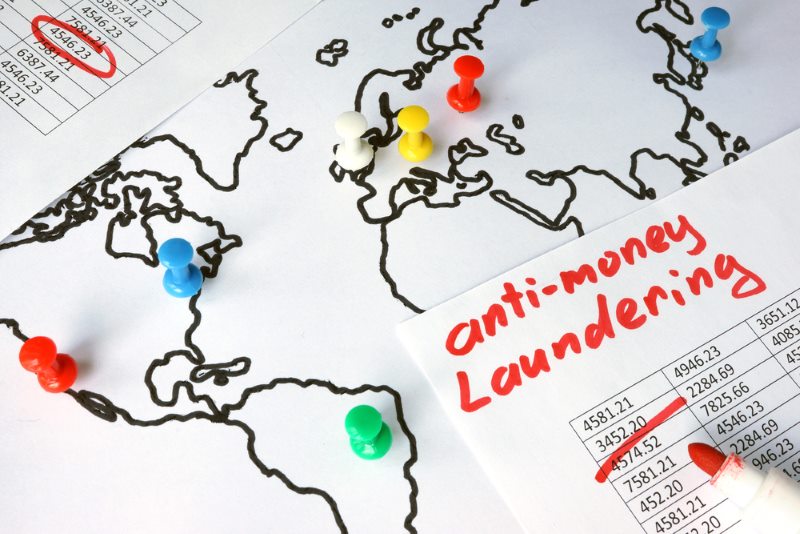Basel Institute reveals slow progress in AML
Earlier this month the Basel Institute on Governance announced the release of the Basel Centre for Asset Recovery’s Basel Anti-Money Laundering Index for 2018 – the so-called “AML Index”. It is the seventh such report assessing countries’ risk exposure to money laundering and terrorist financing. A free public version of the report can be found here while a more detailed expert edition, covering virtually every country in the world, is available at cost. It makes grim reading.
The report states that “public transparency is showing signs of decline, with governments making less information available about how they manage public funds.” The key trend is a lack of measurable progress. In fact, the report finds that “42% of countries have worsened their risk scores between 2017 and 2018. Almost 37% of countries now have a worse risk score than they did in 2012”.
Though some countries are clearly much less risky than others, the report shows that we should take nothing for granted. Countries that were once considered very safe, but which have been put under the spotlight of the new FATF methodology, look somewhat riskier. “The recent Danske Bank scandal seems to confirm the observation that there are big issues with the effectiveness of money laundering supervision in countries generally regarded as low-risk”, according to the report.
A key development is that the FATF methodology not only measures technical compliance but also implementation effectiveness, and the report warns governments and regulatory bodies against hiding behind formal compliance structures and taking a “tick-the-box” approach to anti-money laundering and countering the financing of terrorism (AML/CFT) frameworks. The report authors rely heavily on the FATF methodology together with the Financial Secrecy Index and the US State Department International Narcotics Control Strategy Report (INCSR).
The report warns that there is no country on the planet that can be regarded as zero risk, and highlights points that we have frequently raised here at the AML Knowledge Centre:
“… many low-risk countries have issues that need to be addressed, for example, related to beneficial ownership or politically exposed persons. What’s more, criminals are ingenious at finding new ways to launder money, and governments need to be constantly on the lookout and adjust their legal, institutional and policy responses accordingly.
“In other words, a low-risk score in the Basel AML Index is not a ticket to taking a leave from AML/CFT vigilance, either for a country’s administration or for companies and financial institutions doing business in that country.”
AML Compliance – meeting the challenge
While the AML Index’s methodology is open to criticism (and has been criticized) we think it is right to put the main emphasis on the quality and effectiveness of the AML/CFT framework. However, it is difficult to legislate for best practice in commercial organizations. Our view is that far too many organisations are reliant on business intelligence systems that may support technical compliance but are often ineffective, or weak, in meeting the challenge in any meaningful way. Typically, BI was developed to enable segmentation for mass marketing purposes. However, just because a person or a legal identity entity falls into a high-risk segment, this does not make him or it a money launderer. And declining to take an honest person’s business is not good for your reputation.
So how have financial institutions calibrated their AML programs to balance risk and reputation? Many larger firms have invested in offshore AML entities to check through millions of alerts, the vast majority of which are false positives. A by-product of traditional AML transaction monitoring systems. And with so many false positives, false negatives are bound to slip through.
Moreover, newer technologies such as artificial intelligence and machine learning are spreading optimism throughout their industry. However, these technologies are only as good as the data that is used to train these systems, whereas criminals are constantly inventing new ways of cheating the system, as the AML Index report emphasizes. All of this can impose an intolerable cost burden even for larger companies, let alone small banks and financial institutions. Therefore, strengthening your first line of defence, i.e. tighten up your Know Your Customer processes, is no longer an option but a necessity. This may or may not involve investment in a specific technology solution, but the essential aim is to implement procedures robust enough to identify bad actors at the onboarding stage, rather than relying on AML transaction monitoring systems to identify them when it is already too late.
“Top Misconceptions of Cryptocurrency as a Payment System”
Which can be read on Amazon Kindle Unlimited for Free You can find more interesting articles by visiting us on one of the following platforms: AML Knowledge Centre (LinkedIn) or Anti-Bribery and Compliance at the Front-Lines (LinkedIn)




